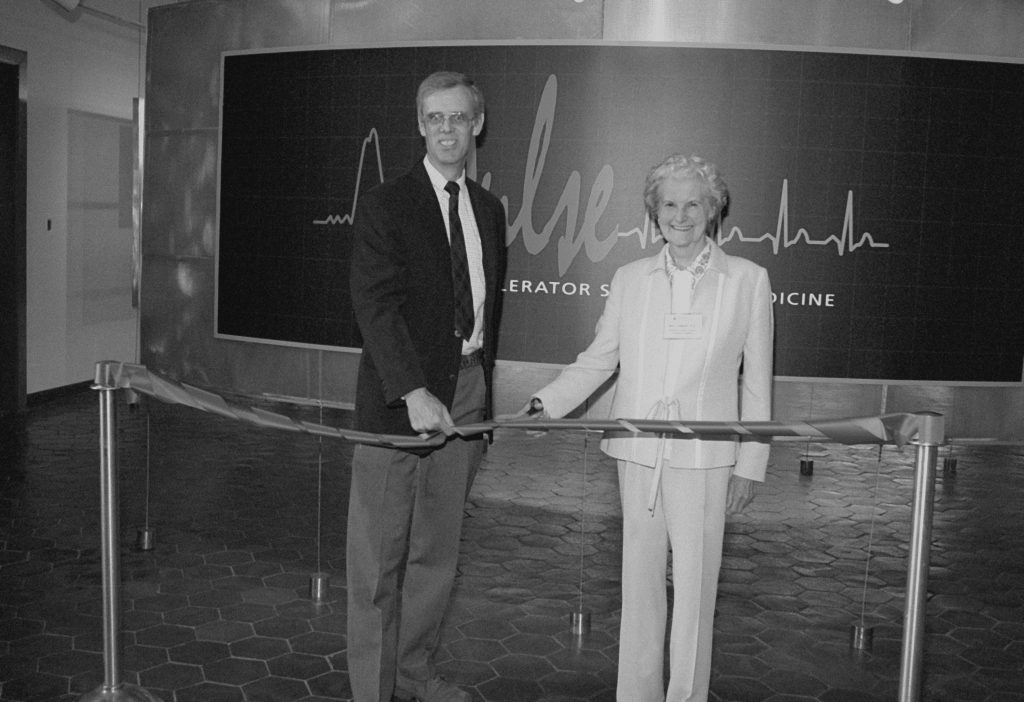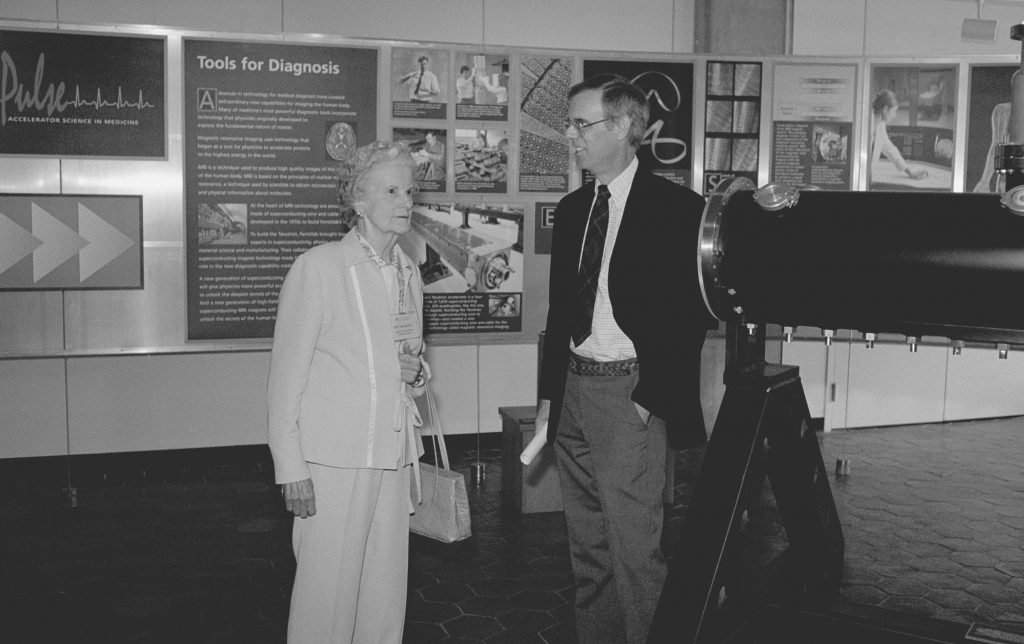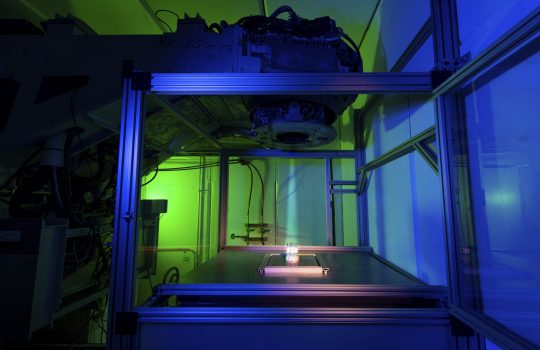
From the earliest days of particle physics in the 1930s to the latest 21st century initiatives, the bold and innovative technologies of particle accelerators have created powerful new tools for medicine.
The exhibit, free and open to the public, highlights the role of accelerators and related technology in creating tools for diagnosis, curing diseases and advancing biomedical research. From magnetic imaging technology (MRI) to particle beams for cancer treatment to powerful light sources for studying DNA structures, accelerator science has led to advances in the medical field as scientists developed applications reaching beyond the original goals of physics research.
The exhibit, in the atrium of Wilson Hall at Fermilab, is open seven days a week from 8:30 a.m. to 5:00 p.m. and will be on display for six months. Visitors are also welcome to enjoy the spectacular view from the observation area on the 15th floor of Wilson Hall, which has recently reopened.
Fermilab is a Department of Energy national laboratory, operated by Universities Research Association, Inc.
Fermilab Associate Director Steve Holmes and physician Mary Caterall, a cancer treatment expert from England, opened the new exhibit “Pulse: Accelerator Science in Medicine” last weekend as part of the 25th anniversary celebration of the Neutron Therapy Facility at Fermilab.





